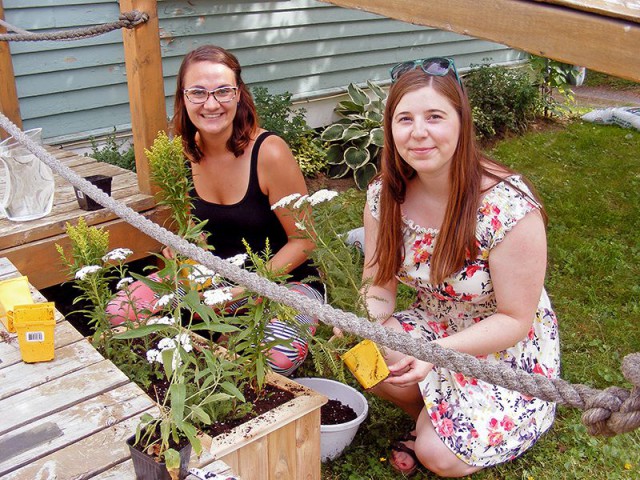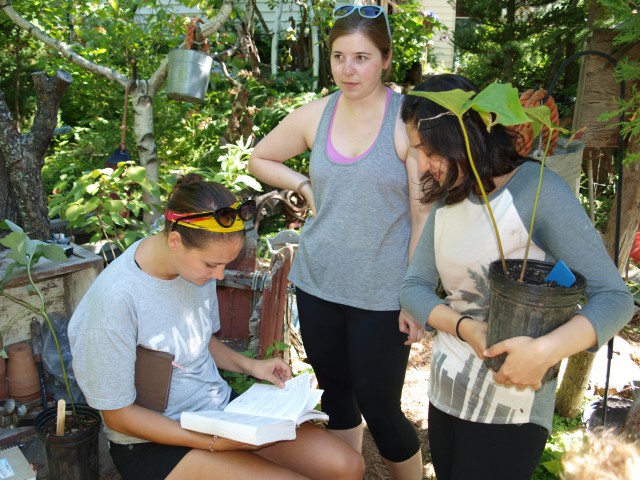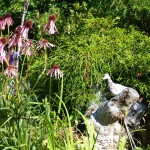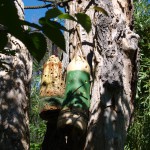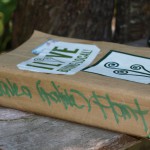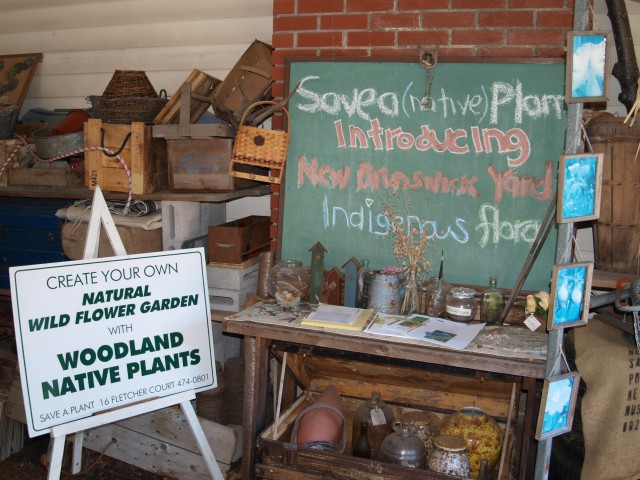This blog is the first in a series about our pollinator garden at Conserver House. You can find the second blog here.
Last week our interns Aliza, Olivia and Karyn traveled to David Smith’s garden to learn more about native plant species in New Brunswick. David operates Save A (Native) Plant in Fredericton, a nursery dedicated to the preservation of native plant species. We were excited to learn more about native plants in preparation for the urban pollinator garden we’re helping create outside Conserver House. Pollinators range from flies, beetles and birds, to bees, butterflies and bats! These animals move pollen from one flower to another, fertilizing the plant and allowing it to reproduce. This happens all around the world, and almost ¾ of the foods we eat need pollinators to reproduce! Pollinators play a fundamental role in ecosystems around the world, and their declining numbers are a real concern.
David Smith has lived in Fredericton all his life with his main interest being native plant species. He earned a diploma in Horticulture from the University of Guelph, and ever since, has been promoting the survival of native plants and their habitats as they become degraded and threatened from climate change and development. Save A (Native) Plant’s objective is to inspire New Brunswick residents and businesses to create their own green spaces to help ensure the survival of critical native plants. Activities include the development of native plants to complement residential landscaping schemes, for eco-restoration purposes, and native display gardens.
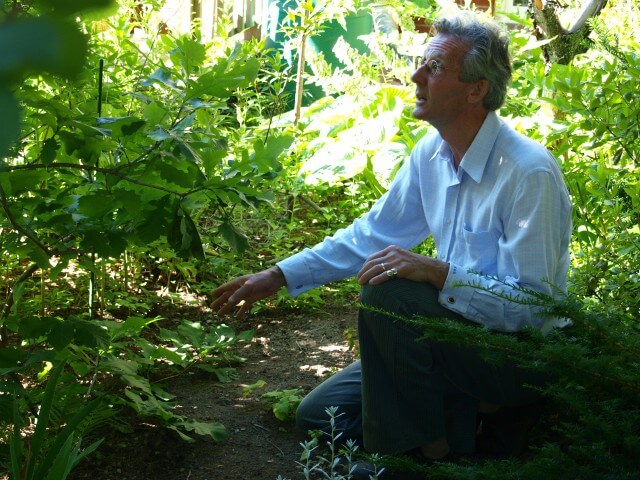
When we arrived at David Smith’s property, you could hardly see the house! The front yard was covered with different trees, shrubs, and flowering plants; the backyard was even more of the same! We got lost in maze-like paths filled with ferns, trilliums, oak trees, bloodroot and several more species we had never heard of before! David told us he had about 44 different kinds of plants growing in his yard, with more than one species of certain kinds, such as trilliums. As for native species on his property, the number is constantly changing because plants are being sold, divided up, and new seeds are being planted.
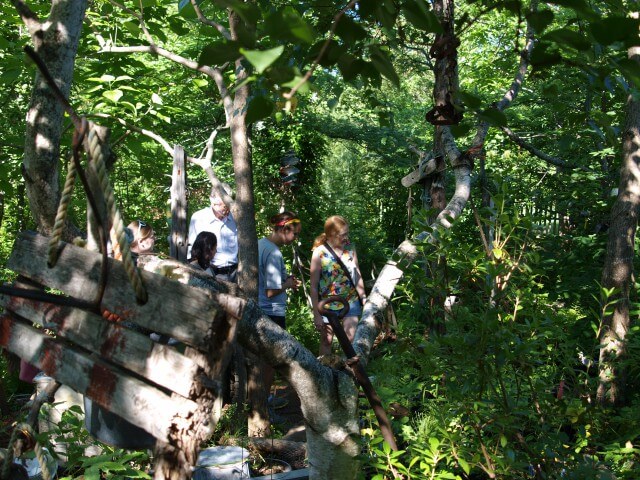
We even discovered the beauty of repurposing old yard sale knickknacks like wagons, typewriters, buoys and more. Some of these he uses to create a variety of different microhabitats that play host to different plants. For example, there was a carnivorous pitcher plant that normally lives in boggy, nutrient-deficient areas growing in an old saucer sled David used as a kid! Plants that need a lot of sun to survive were found in areas that received direct sunlight while plants that thrive in the shade were found under larger trees and shrubs.
One question that stuck out was how difficult it was to maintain this type of backyard versus a lawn. David’s response to this was very interesting. Most of us have lawns and mow them often, and some people also spend a lot of time fertilizing, liming and watering lawns as well. A native garden does not require the same tasks. New transplants can require extra watering at first, but several native plants are drought-tolerant and can live with minimal upkeep. David takes a walk around his garden every morning that consists of a little pest management and making sure the plants are doing well. After discovering this, we think NBers are missing out on the enjoyment and bounty native species have to share. If more homeowners would set aside a spot in their own yards and encourage others, it would help the native species – and pollinators – considerably!
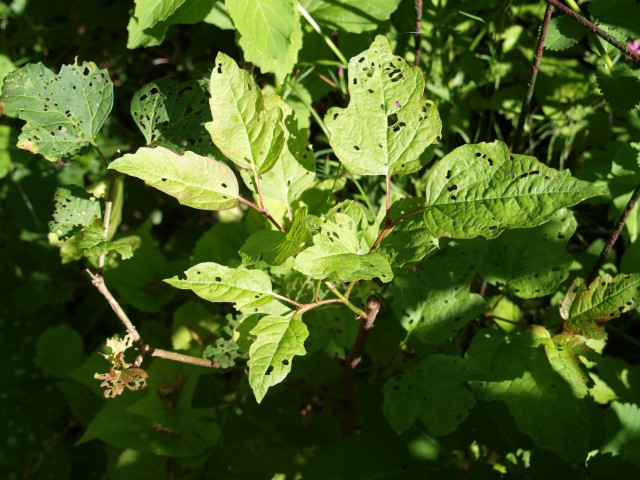
Throughout the tour, David told us some interesting facts about a number of different plants on his property. Bloodroot, named after the color of its red sap, is poisonous to humans and can lead to tissue damage if it comes in contact with your skin. Jack-in-the-pulpit is a hermaphroditic plant; when it is young it produces male flowers, and once it grows older it produces female flowers. Dutchman’s breeches was named after the flowers that this particular plant produces – they look like a little pair of pants! David told us his favorite native species is Aralia racemosa. The reason for this is because of how this large plant grows from nothing early each spring! David searches for this plant every season, surprised where he finds it, thinking no plant would spring up where it has. There was lots to see and learn about around every corner.
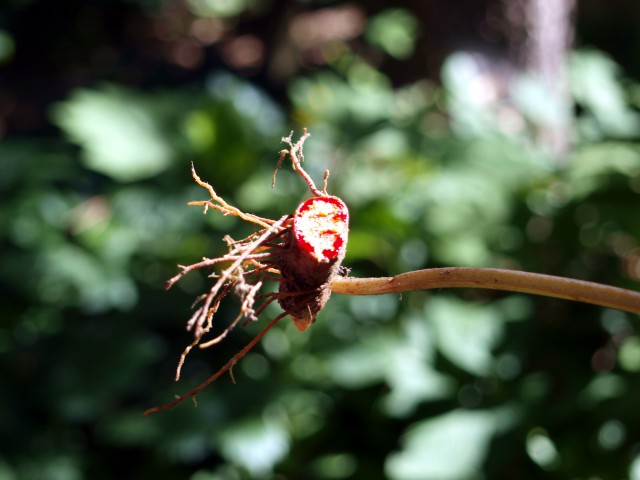
When we asked David what the biggest challenge in promoting Sa(n)P was, he spoke about several difficulties. These included the short growing season, specialized plants, and the difficulty in maintaining and updating a website. As well, with any smaller projects, many people tend to visit large centers instead of smaller, local nurseries. David’s main form of promotion is through word of mouth. He participates in talks and has taken part in restoration projects. We would definitely recommend checking out his awesome garden and you can read up more on what he does here.
Native plants are very important to both biodiversity and to the environment. Native plants have learned to adapt to the changes in climate in their area and have continued to thrive, whereas non-native species risk becoming invasive when they are introduced to new habitat. Each plant has a unique position or niche in nature, and this is the key to its survival. Native plants are also more beneficial for pollinators, since many of the cultivated varieties you buy at gardening centers don’t produce as much nectar for the pollinators as native species do.
The pollinator garden the Conservation Council of New Brunswick is creating is an initiative made possible through a grant from the Fredericton Community Foundation. The garden is being designed to create awareness around the importance of creating and protecting habitat for pollinator species. The goal of the garden is to educate people about the importance of pollinators, and show them what they can do to help restore these important populations! We were able to take a number of David’s native plants back with us to Conserver House to aid in the creation of our pollinator garden. Stay tuned to see how the garden turns out!
